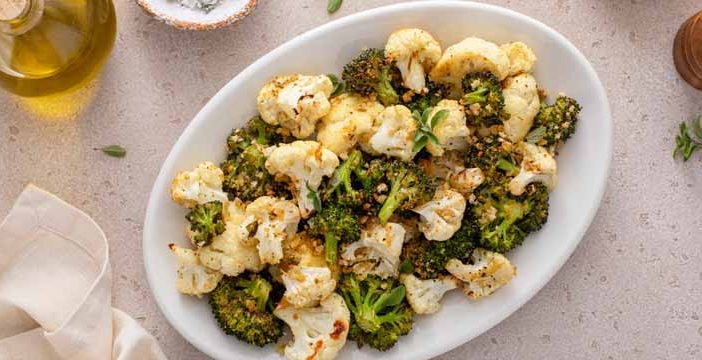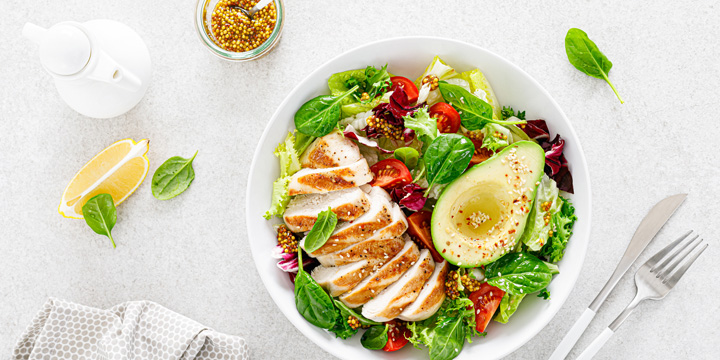
Oh, the mighty cauliflower! Filled with vitamins C and K, this versatile vegetable is also a great source of folate (which supports cell growth) and heart-healthy fibre. That means it also bodes well in a diabetes diet. Let’s find out more about why diabetes and cauliflower are a winning pair.
Is it really that healthy?
Yes! As part of the cruciferous family (which also includes broccoli, cabbage, Brussel sprouts, kale and collard greens), cauliflower offers a plethora of nutrients and antioxidants. It’s also fat-free, cholesterol-free, low-carb and low in sodium. Along with being high in fibre, which is essential for good digestion, cauliflower contains compounds that can support a healthy immune system. In fact, some research has shown that elements in this vegetable (i.e., glucosinolates) can be beneficial in cancer prevention too.
Why should I eat cauliflower if I have diabetes?
With its low-carb and high-fibre content, cauliflower has a low glycemic index so it won’t make your blood sugars spike. Cauliflower is also rich in essential vitamins and antioxidants that support overall good health. A single floret contains 10% of your daily vitamin C requirements. Plus, this vegetable grows in Canada, making it easy to access in most grocery stores.
How do I use cauliflower?
Like broccoli and cabbage, cauliflower can be eaten raw or cooked in various ways, including roasted, grilled, baked or steamed, which retains the most nutrients. Be sure to ditch the higher fat macaroni and cheese for this roasted cauliflower mac and cheese option, or try these Crispy Baked Cauliflower Tots which are a perfect snack for dipping and sharing. This vegetable also makes a great savoury snack for entertaining. Eat it raw paired with hummus or make your own cauliflower popcorn by tossing small florets in a mixture of chili and spices before roasting until crisp.
Cauliflower can also serve as a rice or flour substitute and makes a great alternative for mashed potatoes. Here’s a tasty low-carb recipe for pizza using roasted cauliflower for its crust.
On top of being nutritious, cauliflower comes in a variety of colours and flavours too. For example, orange cauliflower is slightly sweeter and has more beta-carotene than white, while purple cauliflower is high in anthocyanin, a healthy antioxidant commonly found in purple vegetables.
On top of being nutritious, cauliflower comes in a variety of colours and flavours too. For example, orange cauliflower is slightly sweeter and has more beta-carotene than white, while purple cauliflower is high in anthocyanin, a healthy antioxidant commonly found in purple vegetables.
Don’t throw the leaves and stems of your cauliflower away either. Not only are they fully edible, but they are also chock full of calcium, fibre, vitamin C and folate. Consider adding the leaves to a salad or using the stems for your next soup stock. Cauliflower also freezes well. Simply blanch it in boiling water first to retain its colour, flavour and texture, then drain and freeze to add to soups and salads later.
Remember that the foods you eat play a big part in helping you manage your diabetes optimally. Cauliflower is one of those nutritious options that is also versatile enough to use in a variety of delicious ways. Be sure to give it a try it when you’re itching for a hearty but low-carb addition to your next meal.



